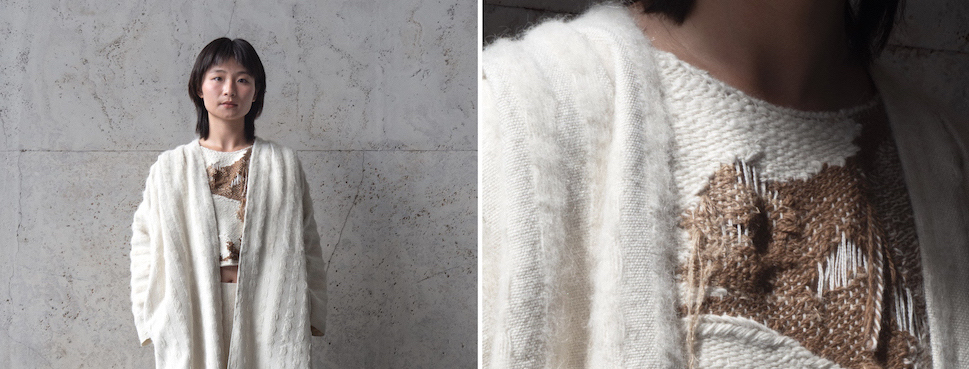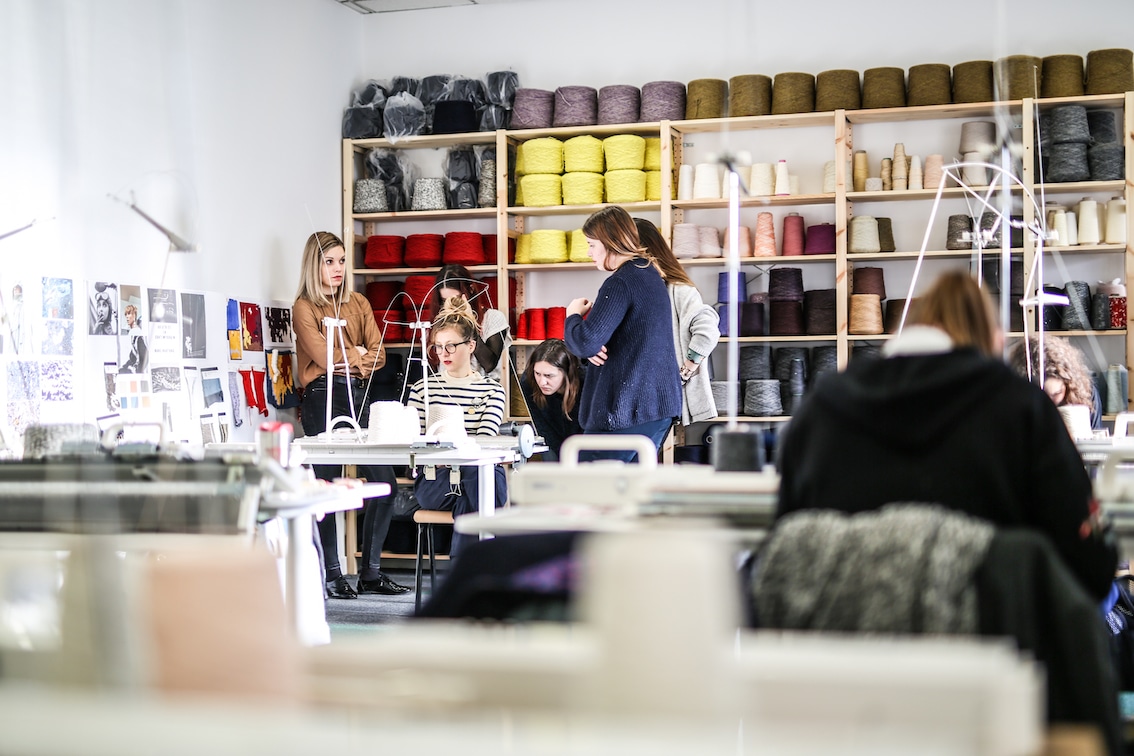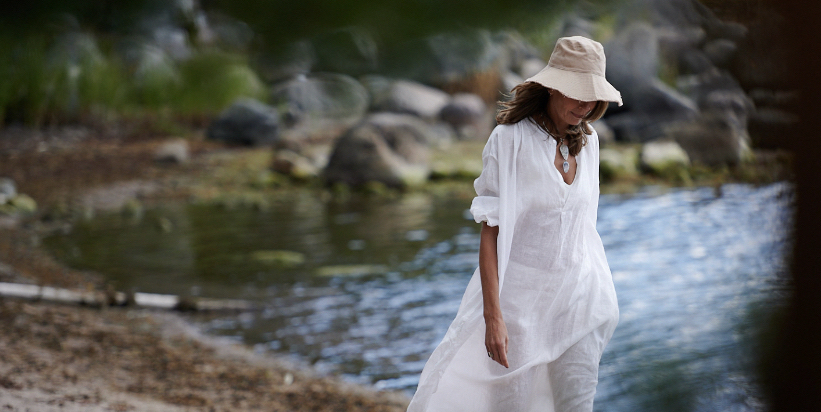Hailing from Upper Styria, Austria, Sabrina Stadlober’s deep connection to nature shapes her design philosophy. Her latest collection, “Soil to Soil,” reflects her commitment to sustainability, highlighting local alpaca farming and regenerative agriculture. With a background from prestigious institutions like ESMOD Munich and Polimoda in Florence, Sabrina offers a unique perspective on textiles and environmental stewardship. We discuss her innovative approach to fashion, her vision for sustainability, and her aim to connect humanity with the natural world.
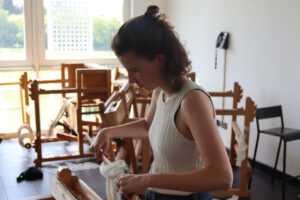
Where do you come from?
This year, I embarked on an exciting project connected to the alpaca farm where I collaborated for my latest collection, Soil to Soil. The farm is located near my hometown in Austria, in the region of Upper Styria, which is characterized by its mountainous terrain and dense forests. This natural environment has profoundly influenced both my aesthetic and my mindset.

Could you tell us a few words about your education and professional background?
My passion for fashion ignited at an early age. At fourteen, I began my training at a fashion school in Graz, followed by a degree in fashion design from ESMOD Munich. In addition to my formal education, I completed various internships, gaining valuable experience in haute couture and conceptual design. After several years working as a fashion and product designer in Vienna, my love for textiles led me to pursue a Master’s in Textiles from Farm to Fabric to Fashion at Polimoda in Florence, founded and mentored by Lidewij Edelkoort and Philip Fimmano. This education has profoundly shaped my perspective as a conscious textile, product, and fashion designer.
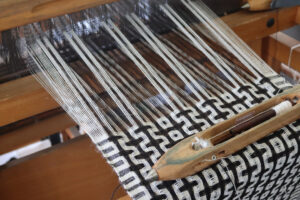
What is your vision of sustainability?
For me, sustainability encompasses holistic design that begins with the source of materials. We need systems that create enduring garments, objects, and environments that benefit both the Earth and its inhabitants rather than exploiting them. I believe that regenerative agriculture plays a vital role in this, promoting soil health, biodiversity, and ecosystem restoration.
In addition to ethically sourcing raw materials, I see craftsmanship as a cornerstone of sustainability in everyday life. Craft preserves traditional techniques, fosters community, and aligns ethics with aesthetics. By embracing craftsmanship, we honor the maker and have the opportunity to develop these skills in innovative ways for a better future.
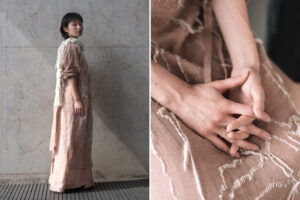
As a conceptual fashion designer, could you elaborate on your approach?
When I initiate a project, my goal is to distill an idea to its essence through learning, reflection, and hands-on experimentation. I start with extensive research, followed by a prototyping phase. Both theoretical and practical knowledge fuel my creativity, guiding my design process and enabling me to rethink structures.
In recent years, garments and textiles have become my medium for expressing concepts. I create collections that are handcrafted on demand and designed for longevity, reinforcing my commitment to sustainability and craftsmanship.
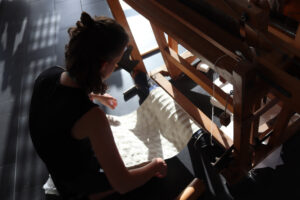
You created the Soil to Soil collection in 2024 ; can you tell us about it?
Soil to Soil is an organic couture collection that embodies longevity, drawing inspiration from the noble qualities of alpaca wool, silk, and linen. The concept centers around circularity—materials originate from the earth and ultimately return to it. This perspective informed my textile design, beginning with fiber origins and extending through decomposition.
The idea blossomed during my first year at Polimoda, where we explored fibers in their raw state, whether plant- or animal-based. For this collection, I collaborated with local alpaca breeders and a spinning mill in Austria, immersing myself in animal farming, shearing, and fiber processing—both by hand and machine. I also sourced natural linen and silk from responsible, ethical suppliers.
With the same patience applied to farming and fiber processing, I crafted most of the textiles for my garments through hand-weaving, needle-felting, and embellishment. The resulting organic textures explore the sensorial relationship between human hair and animal fiber follicles. Each piece reflects the transience of human existence, as well as that of clothing and materials. By ensuring everything is entirely natural, the garments can be passed on or returned to the earth—completing the cycle of soil, plant, fiber, and garment once more. In this concept, death is not an end but a new beginning—a source of fertility and life.
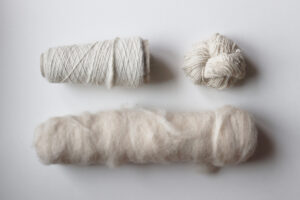
Do you have upcoming projects linked to the fashion industry?
My next project is not directly linked to the fashion industry, but it touches on similar themes. As I mentioned, I’ve been collaborating with the Wieserhof alpaca farm and a team of filmmakers on a project that explores humanity’s connection to animals and the environment—particularly concerning organic garments and textiles. I believe many of us yearn for a deeper connection to the wild and natural world, and reconnecting with these elements is essential for living a more holistic and fulfilling life.
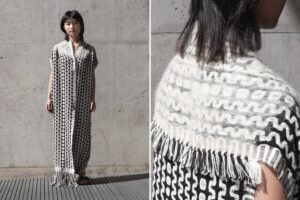
“Thank you for this interview and for providing a platform for these important discussions ! I’m always eager to connect with those who share an interest in sustainability and design. I believe that sharing knowledge—especially across disciplines—enables us to drive meaningful change. That’s why I actively seek collaborations with creatives, farmers, and scientists, embracing opportunities to learn from and with others.”
Words : Sabrina Stadlober / Anne-Sophie Castro
Photos : Sabrina Stadlober

